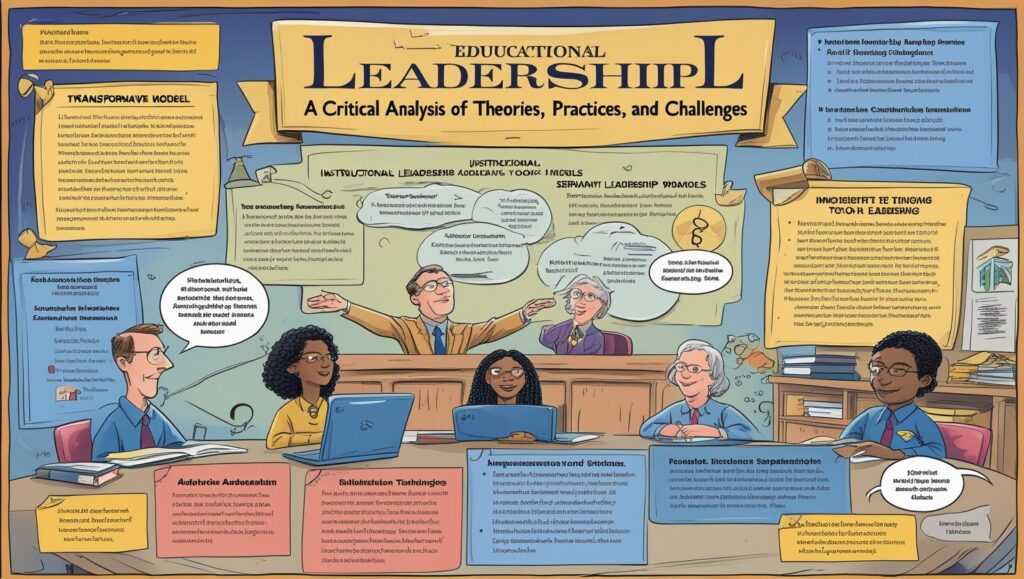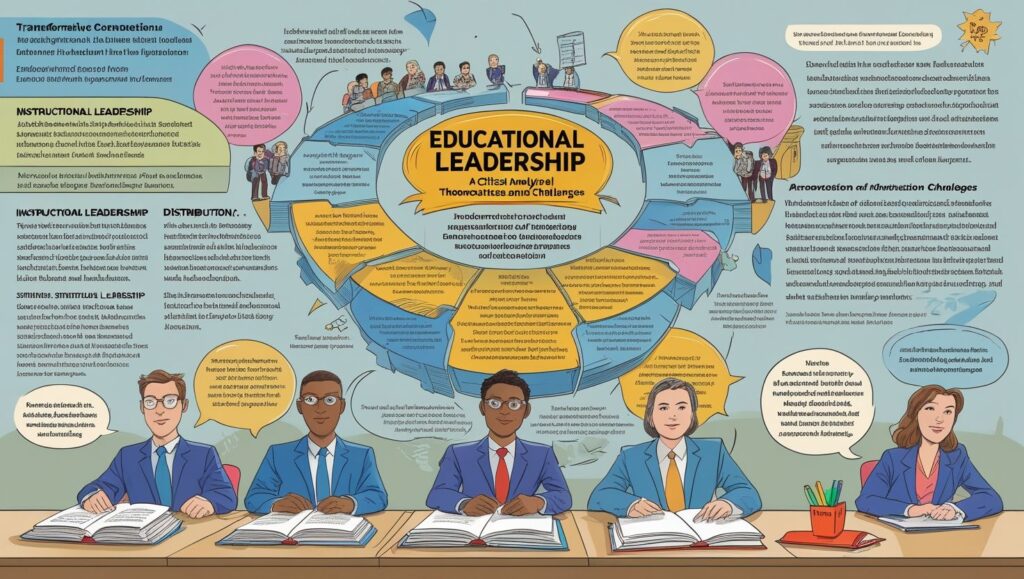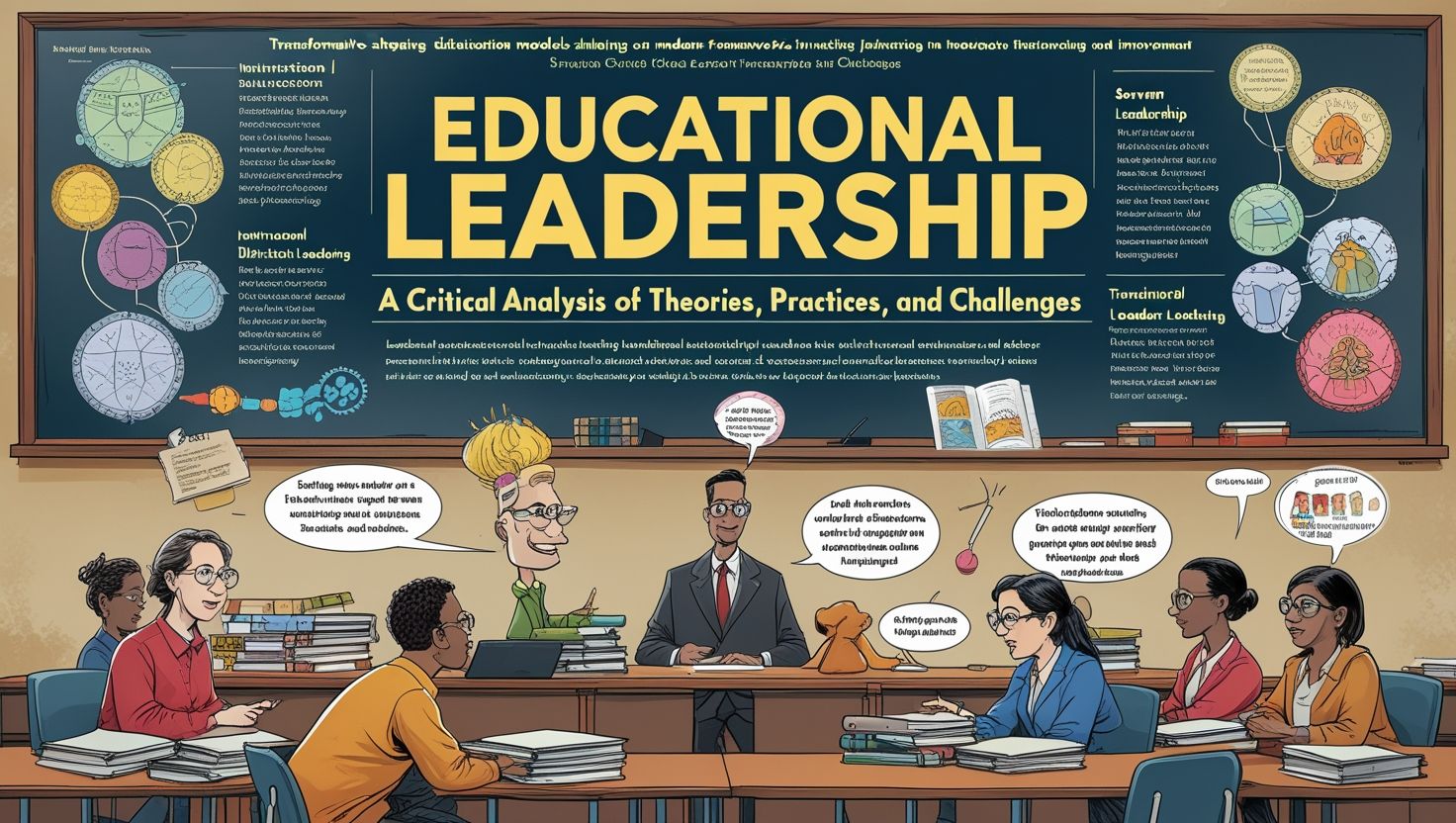Introduction
Educational Leadership: Theories, Practices, and Future Directions, Educational leadership is a critical factor in shaping effective schools and improving student outcomes. It involves the strategic direction, management, and inspiration of teachers, students, and stakeholders to achieve academic excellence. In the 21st century, educational leaders face increasing pressures, including technological advancements, policy reforms, and demands for equity and inclusion. This article explores the foundational theories of educational leadership, examines contemporary practices, and discusses the challenges and future directions for leaders in education. By understanding these elements, educators and policymakers can develop strategies to enhance leadership effectiveness in diverse learning environments.
The role of educational leaders extends beyond administrative duties to include instructional guidance, community engagement, and fostering a positive school culture. Traditional models of leadership, such as authoritarian approaches, have given way to more collaborative and transformational styles. Today’s leaders must navigate complex issues such as digital learning, socio-emotional development, and systemic inequities. Research indicates that effective leadership is second only to teaching in its impact on student achievement, underscoring its importance in educational systems worldwide. This article provides a comprehensive analysis of how leadership theories translate into practice and how leaders can adapt to emerging trends in education.
Theoretical Foundations of Educational Leadership
Several key theories underpin the study of educational leadership, each offering unique insights into how leaders influence school success. Transformational leadership, developed by Burns (1978) and Bass (1985), emphasizes vision, inspiration, and intellectual stimulation. Leaders who adopt this approach foster a shared mission, encouraging innovation and commitment among staff. Another influential model is instructional leadership, which focuses on curriculum development, teacher support, and direct involvement in improving teaching and learning. This approach positions school leaders as the primary drivers of academic excellence.
Distributed leadership challenges hierarchical structures by advocating for shared decision-making among teachers and administrators. Spillane (2006) argues that leadership is most effective when responsibilities are dispersed across multiple stakeholders. Additionally, servant leadership, introduced by Greenleaf (1970), prioritizes empathy, ethical stewardship, and community-building. These theories highlight the diverse ways leadership can be enacted, depending on organizational needs and cultural contexts. Understanding these frameworks helps leaders adapt their strategies to meet the evolving demands of education systems.

Contemporary Leadership Practices in Education
Modern educational leaders employ a variety of strategies to enhance school performance and student success. Data-driven decision-making is a prominent practice, where leaders use assessment results, attendance records, and other metrics to guide instructional improvements. For example, principals may analyze standardized test scores to identify learning gaps and implement targeted interventions. Another key practice is technology integration, where leaders facilitate the use of digital tools to enhance teaching, learning, and administrative efficiency. This includes supporting blended learning models and ensuring equitable access to technology.
Culturally responsive leadership is also gaining traction, as leaders work to create inclusive environments that respect diverse student backgrounds. This involves revising curricula, providing professional development on equity, and engaging with marginalized communities. Additionally, collaborative leadership encourages teamwork among teachers, parents, and community members to support student well-being and academic growth. These practices reflect the shift from top-down management to participatory and adaptive leadership styles in response to the complexities of modern education.
Challenges Facing Educational Leaders
Despite the importance of educational leadership, leaders face numerous challenges that hinder their effectiveness. Policy constraints, such as standardized testing mandates and funding limitations, often restrict leaders’ ability to implement innovative programs. Additionally, teacher shortages and burnout create staffing crises, requiring leaders to focus on recruitment, retention, and morale-building strategies. The increasing emphasis on accountability and high-stakes assessments also places immense pressure on leaders to demonstrate measurable improvements in student performance.
Another significant challenge is addressing equity gaps, as leaders must ensure that all students, regardless of socio-economic status or background, have access to quality education. Furthermore, the rapid pace of technological change demands continuous professional development to keep leaders and staff updated on digital tools and online learning platforms. These challenges require adaptive, resilient leadership that balances administrative demands with visionary, student-centered approaches. Addressing these issues is critical for sustaining effective educational systems in the future.

Future Directions in Educational Leadership
The future of educational leadership will likely be shaped by emerging trends such as artificial intelligence (AI) in education, personalized learning, and global collaboration. Leaders must stay informed about technological advancements to integrate AI-driven analytics for student performance tracking and adaptive learning systems. Another growing focus is sustainability leadership, where schools adopt eco-friendly practices and teach environmental stewardship. Additionally, global competency leadership emphasizes preparing students for an interconnected world through cross-cultural exchanges and multilingual education.
Another key direction is strengthening emotional intelligence in leadership, as leaders must navigate complex interpersonal dynamics and support the mental health of students and staff. Furthermore, decentralized leadership models, such as teacher-led schools and community-based governance, may gain prominence as education systems seek more democratic decision-making processes. By embracing these trends, educational leaders can foster innovative, equitable, and future-ready learning environments.
Conclusion
Educational leadership is a dynamic and multifaceted field that plays a crucial role in shaping successful schools. By understanding foundational theories, adopting contemporary practices, and addressing current challenges, leaders can drive meaningful improvements in education. The future of leadership will require adaptability, technological proficiency, and a commitment to equity and innovation. As education continues to evolve, effective leadership will remain essential in ensuring that all students have the opportunity to thrive. Policymakers, practitioners, and researchers must collaborate to support and develop the next generation of educational leaders.

I really like assembling useful info, this post has got me even more info! .